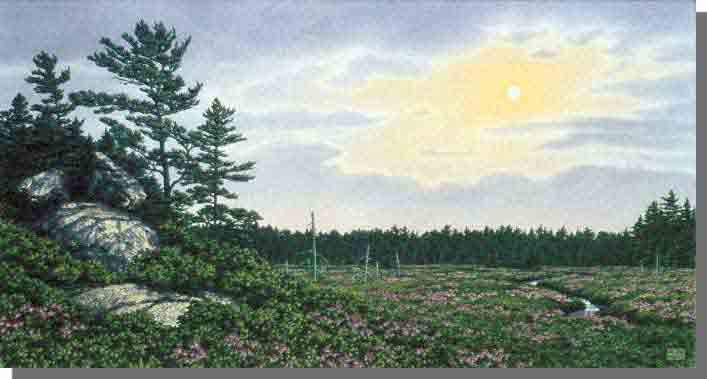 McGill Lake Wilderness Area consists of two distinct parcels and a cluster of islands at McGill Lake and Big Molly Upsim Lake, near Albany Cross, Annapolis County, with more than 8 km of shoreline.
McGill Lake Wilderness Area consists of two distinct parcels and a cluster of islands at McGill Lake and Big Molly Upsim Lake, near Albany Cross, Annapolis County, with more than 8 km of shoreline.
Much of the forest consists of older white and red pine, spruce, and maple-oak-birch communities. Some of the older pines have fire scars from historic forest fires. Shade-tolerant hardwood and eastern hemlock occur on more productive and well drained sites in portions of the larger parcel.
A variety of wetland types are abundant throughout. The smaller, 178-hectare parcel was designated as wilderness area in 1998. It encompasses a wetland complex, with a range of bog and fen types and associated forest communities of maple-oak-birch, and spruce-fir-pine/maple-birch. The larger, 476-hectare parcel was acquired from the former Bowater Mersey Paper Company in 2007 and added to the wilderness area in 2012.
The unpaved, Old Liverpool Road passes along several parts of the wilderness area.
The wilderness area also lies along a historic canoe route, between Shannon and Molly Upsim lakes. These waterways are popular for wilderness recreation and can be accessed at various points, including facilities maintained by the Municipality of Annapolis County at Shannon River Canoe Access Park. The municipality also publishes a canoe route guide which is available on-line. Adventurous paddlers may extend their travels by continuing southwest to Lake Alma and the Medway River system in nearby Medway Lakes Wilderness Area.
McGill and Molly Upsim lakes are part of the Nictaux River system, which is managed by Nova Scotia Power to produce power at a hydroelectric plant near Nictaux. As a result, water levels in these lakes fluctuate with the demands of power generation.

